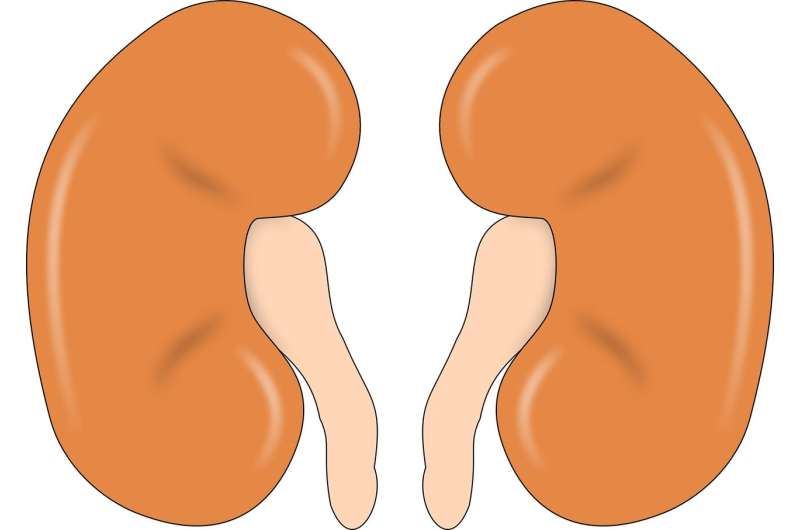COVID-19 as systemic disease: What does that mean for kidneys?

It was clear at a relatively early stage of the pandemic that SARS-CoV-2 causes a wide range of symptoms; in addition to typical respiratory symptoms, patients also had neurological symptoms (starting with anosmia), gastrointestinal symptoms, elevated liver values, and renal, urinary or hematological changes, for example. The fact that such findings occurred not only in severely ill patients with general organ dysfunction suggested that the virus may potentially cause disorders in various organs directly, i.e. that it causes a multi-system disease.
In spring 2020, at the very beginning of the pandemic, the authorities in Hamburg ordered autopsies be performed on all patients who had died with COVID-19. This resulted in one of the world's largest autopsy databases in which data on all organ systems were gathered. The autopsies carried out by forensic pathologists in Hamburg have provided the basis for many organ-related COVID-19 research projects.
One of last year's most frequently cited nephrologic studies, led by Prof. Tobias Huber, UKE Hamburg, showed that the viral load (measured as the number of copies per cell) in the deceased was highest in the respiratory tract and second highest in the kidneys, followed by lower levels in heart and liver, brain and blood. Old age and the number of comorbidities, above all, were associated with multi-organ and renal tropism.
All in all, the Hamburg studies indicate that the diversity of symptoms in SARS-CoV-2 infections might also be related to the wide range of organs infected by the virus.
Association of SARS-CoV-2 organotropism with acute kidney damage
Compared to other intensive care patients with severe infections or sepsis, COVID-19 patients have a significantly higher rate of acute kidney injury (AKI) (56.9% versus 37.2%). Renal replacement therapy is required by 4.9%, compared to 1.6%. A study of 5,216 US veterans with COVID-19 showed an average AKI incidence of 32%, which means that one in three developed acute kidney injury. 12% needed kidney replacement therapy (dialysis), and nearly half (47%) of the patients had not recovered renal function by discharge. "These are dramatic figures," explained Professor Tobias Huber, UKE Hamburg, at the Opening Press Conference of the 2021 ERA-EDTA Congress. "We know from major AKI studies that some patients whose kidney function does not recover after AKI subsequently transition to chronic kidney disease."
AKI was associated with the risk of mechanical ventilation (OR 6.46), the risk of mortality (OR 6.71) and prolonged in-patient treatment (OR 5.56). Predictors of acute kidney failure were age, obesity, diabetes mellitus, hypertension, restriction of kidney function (lower filtration rate/ eGFR), male gender and Afro-American descent.
Another major autopsy study conducted by Prof. Huber's team in Hamburg explored the hypothesis that renal tropism may be independently correlated with outcome. In 63 autopsies with a similarly high comorbidity rate as in other studies, the virus was directly detected in the kidneys of 60% of the cases. This also correlated with age, number of coexisting diseases and male gender. The time interval between COVID-19 diagnosis and date of death was significantly shorter when the virus was detectable in the kidneys (approx. 14 versus 21 days). Renal tropism was also associated with the incidence of acute kidney injury: Of a total of 40 patients, seven had no AKI (three of the seven having renal viral infection), compared to 33 patients with AKI (23 of the 33 having virus detected in the kidney). The virus was isolated from tubule cells of autopsied kidney tissue, and subsequent cell infection experiments showed that the viruses were active and capable of replication, increasing a thousand-fold in 48 hours.
Together these studies identified SARS CoV-2 as a multi-tropic virus with affinity for the kidney potentially explaining why kidney injury is so frequently occurring in COVID-19 patients.
More information:
[1] Victor G Puelles, Marc Lütgehetmann, Maja T Lindenmeyer et al. Multiorgan and Renal Tropism of SARS-CoV-2. N Engl J Med 2020; 383 (6): 590-592
[2] Alexis Werion, Leila Belkhir , Marie Perrot et al. SARS-CoV-2 causes a specific dysfunction of the kidney proximal tubule. Kidney Int 2020; 98 (5): 1296-1307
[3] Benjamin Bowe, Miao Cai, Yan Xie et al. Acute Kidney Injury in a National Cohort of Hospitalized US Veterans with COVID-19. Clin J Am Soc Nephrol 2020; 16 (1): 14-25
[4] Fabian Braun, Marc Lütgehetmann, Susanne Pfefferle et al. SARS-CoV-2 renal tropism associates with acute kidney injury. Lancet 2020; 396 (10251): 597-598




















